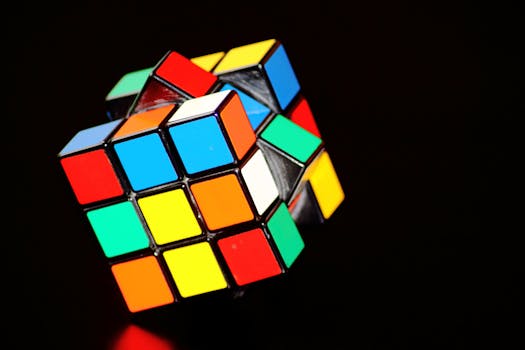Cultivate Your Patience and Skill by Learning to Solve the Rubik’s Cube
The Rubik’s Cube, a colorful 3D puzzle invented in 1974 by Hungarian architect Ernő Rubik, has captivated millions around the globe. While it may seem like a simple toy, solving the cube requires a blend of patience, logical thinking, and spatial awareness. This article will guide you through the journey of mastering the Rubik’s Cube, from beginner techniques to advanced methods, while highlighting the benefits of this engaging challenge.
The Benefits of Solving the Rubik’s Cube
Before diving into the methods of solving the cube, it’s essential to understand the benefits that come with this intellectual pursuit. Here are some key advantages:
- Enhances Problem-Solving Skills: The Rubik’s Cube encourages critical thinking and the ability to approach problems from different angles.
- Improves Memory: Memorizing algorithms and sequences can significantly enhance your memory retention capabilities.
- Boosts Patience and Focus: The process of solving the cube requires concentration and perseverance, fostering a patient mindset.
- Encourages Spatial Awareness: Understanding the cube’s mechanics improves your spatial reasoning skills, beneficial in various fields such as engineering and architecture.
Getting Started: Beginner Methods
For those new to the Rubik’s Cube, starting with beginner methods is crucial. The most popular beginner method is the Layer-by-Layer (LBL) approach. Here’s a step-by-step breakdown:
- Step 1: Solve the First Layer: Start by creating a white cross on the top face, ensuring the edge pieces match the center colors.
- Step 2: Complete the First Layer Corners: Position the white corner pieces correctly to finish the first layer.
- Step 3: Solve the Middle Layer: Use algorithms to position the edge pieces of the middle layer without disturbing the completed first layer.
- Step 4: Create a Yellow Cross: Focus on forming a yellow cross on the top face, using specific algorithms.
- Step 5: Position Yellow Corners: Finally, position the yellow corners and edges to complete the cube.
By practicing these steps, beginners can develop a foundational understanding of the cube’s mechanics and improve their solving speed.
Progressing to Intermediate Techniques
Once you have mastered the beginner method, it’s time to explore intermediate techniques that can enhance your solving speed and efficiency. One popular method is the CFOP (Cross, F2L, OLL, PLL) method:
- Cross: Similar to the beginner method, start by solving the cross on the first layer.
- F2L (First Two Layers): Solve the first two layers simultaneously by pairing corner and edge pieces.
- OLL (Orientation of Last Layer): Use algorithms to orient all last layer pieces to have the same color facing up.
- PLL (Permutation of Last Layer): Finally, permute the last layer pieces to their correct positions.
Statistics show that using the CFOP method can reduce solving times significantly, with many competitive solvers achieving times under 10 seconds.
Advanced Techniques for Speedcubers
For those looking to take their skills to the next level, advanced techniques such as the Roux Method and advanced algorithms can be explored. The Roux Method focuses on block building and is known for its efficiency:
- First Block: Build a 1x2x3 block on one side of the cube.
- Second Block: Construct another 1x2x3 block on the opposite side.
- Last Layer: Use fewer moves to orient and permute the last layer compared to traditional methods.
Additionally, learning advanced algorithms can further enhance your speed. Many speedcubers memorize hundreds of algorithms to optimize their solving process.
Conclusion
Learning to solve the Rubik’s Cube is not just about completing a puzzle; it’s a journey that cultivates patience, enhances problem-solving skills, and improves cognitive abilities. By starting with beginner methods, progressing to intermediate techniques, and eventually mastering advanced strategies, anyone can become proficient at this iconic puzzle. The skills developed through this process are invaluable, extending beyond the cube into everyday life. So pick up a Rubik’s Cube today, and embark on a rewarding journey of mental growth and skill development!
